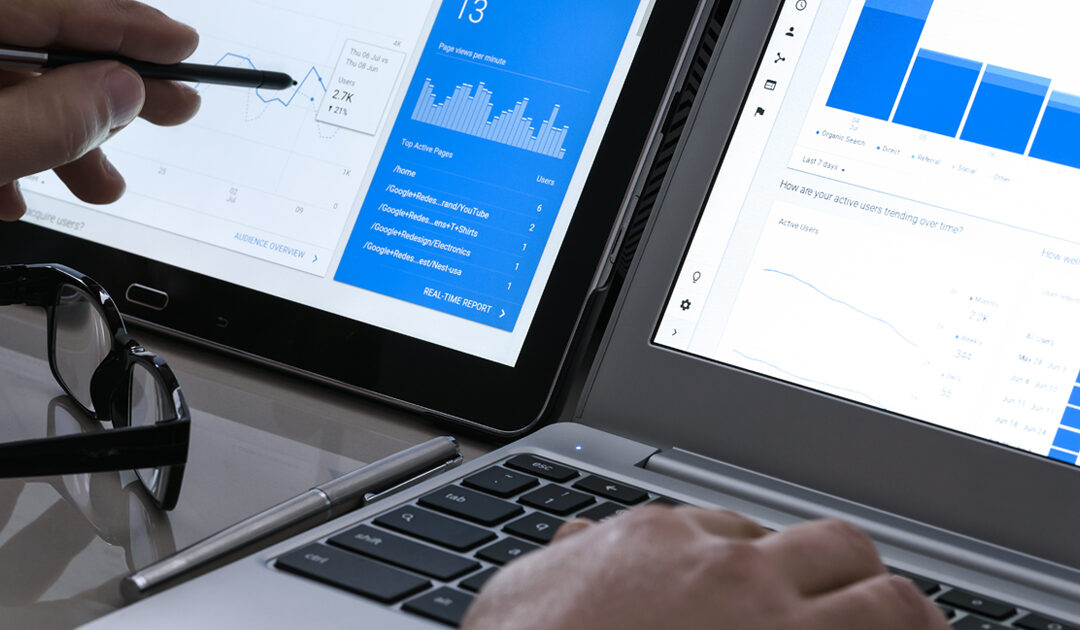
GA4
As a business owner, you may have heard of the change that is on the horizon. The coming of the new age is upon us, and on July 1st of 2023, Google will officially move away from Universal Analytics (UA) and transition into Google Analytics 4 (GA4). You may be wondering to yourself, “what does this mean for me and my business?” No need to worry! Root and Roam is here to help.
While the full step-by-step of changes and differences can be found in google support, we wanted to highlight the biggest changes that may affect you most. In this blog we will cover:
TABLE OF CONTENTS
What is GA4?
What is changing from UA to GA4?
How and when to set up GA4.
WHAT IS GA4?
Google Analytics 4, also known as GA4, is Google’s next generation of analytics. Within this new platform, Google will track event-based data from BOTH websites and apps. GA4 has made it possible to collect both website- and app-based data to better your understanding of your customer’s journey and behavior. With the fear of personal data sharing rising, GA4 has created a property that mitigates this behavior and tracks cookieless measurement as well as behavioral and conversational modeling. Within their predictive capabilities, GA4 now offers guidance without having to work through complex models: Introducing the next generation of Analytics, Google Analytics 4 (GA4) – Analytics Help
WHAT IS CHANGING FROM UA TO GA4?
One of the biggest changes coming to GA4 is the tracking of events. In the old Universal Analytic properties, each event had a Category, Action, and Label with their own hit type. In the new GA4 properties, every hit type now triggers an event in your analytics. GA4 events don’t register Category, Action, and Label. Ultimately, we will need to rethink our data collection to now fit the new GA4 event structure instead of using the same data collection structure we used in Universal Analytics.
Another key component with GA4 is the integration of both web- and app-based data. Before, Universal Analytics would solely track what was happening on your website, and you would have to track your app-based data through firebase. GA4 has combined both features to show all your data in one place.
GA4 will provide simplified reports. Previously, Universal Analytics would show you multiple lists and reports that could be intimidating to some business owners due to the vast amount of data being thrown at you. GA4 will track the key metrics it thinks you will be interested in and will provide simplified reports to speed up your data-tracking process. This new feature can be seen as good or bad, but for the majority of people, it will make Google analytics much easier to understand. For the more experienced data expert, GA4 will come with a new analysis tool that allows you to drill into your data and get the more advanced metric you may be looking for. GA4 will also track more events by default without extra coding, whereas in Universal Analytics you had to implement code to track things like outbound clicks, site searches, video engagements, etc. GA4 automatically tracks these events without the headache of adding code to your site. A more technical breakdown of differences can be found through Googles Analytic Help section.
HOW AND WHEN TO SET UP GA4
While the official date of transition is July 1st 2023, we here at Root & Roam suggest preparing your business for the switch today. With Google understanding that this is a big change for most companies, they have made it so that both properties can run side-by-side while you and your employees get used to the change. One of the biggest reasons we suggest adding GA4 today is that there is no upgrade plan from UA to GA4, meaning that you will not be able to compare historical UA data to the new GA4 data. With that being said, installing the GA4 tag today allows your business to begin tracking data for the future to better understand your month-over-month, and eventually year-over-year data.
Another reason we suggest installing GA4 today is to get yourself up to par on all of the differences before Universal Analytics is shut down. With both platforms running side by side, both you and your team can take this time to compare the two properties and get comfortable with using GA4. Another key fact is that GA4 doesn’t currently offer everything that Universal Analytics offers. Some metrics are still being added and upgraded on the GA4 platform, so having your old Universal Analytics account will ensure that you aren’t missing any data before the transition.
With the world of analytics changing rapidly, we at Root & Roam understand that GA4 installation and reporting can be difficult. If you or your business need any help or guidance in this transition, feel free to reach out and talk to one of our experts!

